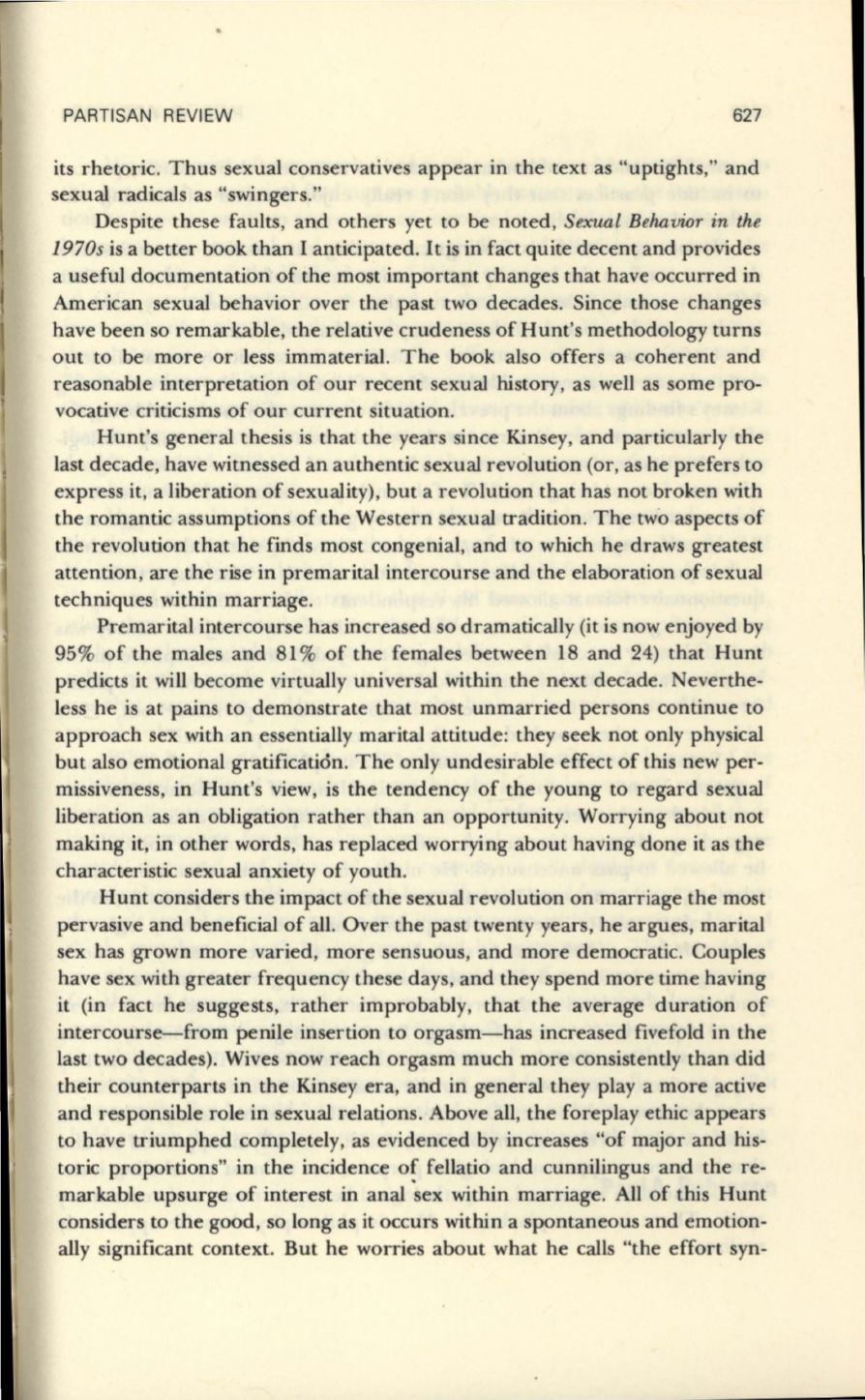
PARTISAN REVIEW
627
its rhetoric. Thus sexual conservatives appear in the text as "uptights," and
sexual radicals as "swingers."
Despite these faults, and others yet to be noted ,
Sexual Behavior in the
1970s
is a better book than I anticipated. It is in fact quite decent and provides
a useful documentation of the most important changes that have occurred in
American sexual behavior over the past two decades. Since those changes
have been so remarkable, the relative crudeness of Hunt's methodology turns
out to be more or less immaterial. The book also offers a coherent and
reasonable interpretation of our recent sexual history, as well as some pro–
vocative criticisms of our current situation.
Hunt's general thesis is that the years since Kinsey, and particularly the
last decade, have witnessed an authentic sexual revolution (or, as he prefers to
express it, a liberation of sexuality), but a revolution that has not broken with
the romantic assumptions of the Western sexual tradition. The two aspects of
the revolution that he finds most congenial, and to which he draws greatest
attention, are the rise in premarital intercourse and the elaboration of sexual
techniques within marriage.
Premarital intercourse has increased so dramatically (it is now enjoyed by
95% of the males and 81% of the females between 18 and 24) that Hunt
predicts it will become virtually universal within the next decade. Neverthe–
less he is at pains to demonstrate that most unmarried persons continue to
approach sex with an essentially marital attitude: they seek not only physical
but also emotional gratification. The only undesirable effect of this new per–
missiveness, in Hunt's view, is the tendency of the young to regard sexual
liberation as an obligation rather than an opportunity. Worrying about not
making it, in other words, has replaced worrying about having done it as the
characteristic sexual anxiety of youth.
Hunt considers the impact of the sexual revolution on marriage the most
pervasive and beneficial of all. Over the past twenty years, he argues, marital
sex has grown more varied, more sensuous, and more democratic. Couples
have sex with greater frequency these days, and they spend more time having
it (in fact he suggests, rather improbably, that the average duration of
intercourse-from penile insertion to orgasm-has increased fivefold in the
last two decades). Wives now reach orgasm much more consistently than did
their counterparts in the Kinsey era, and in general they playa more active
and responsible role in sexual relations. Above all, the foreplay ethic appears
to
have triumphed completely, as evidenced by increases "of major and his–
toric proportions" in the incidence of fellatio and cunnilingus and the re–
markable upsurge of interest in anal 'sex within marriage. All of this Hunt
considers to the good, so long as it occurs within a spontaneous and emotion–
ally significant context. But he worries about what he calls "the effort syn-


